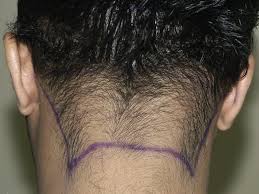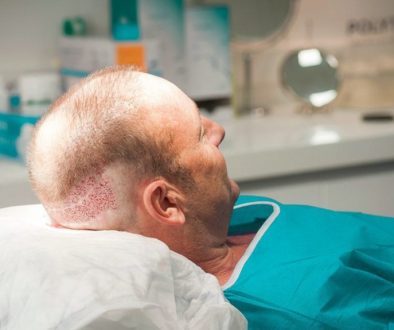Can I Have A Hair Transplant With Retrograde Alopecia?
I’m considering having a hair transplant, but I just found out that I have retrograde alopecia. Am I still a candidate for surgery?
Unfortunately, there is no clear cut answer, it depends on the individual’s goals and hair loss pattern. However, allow me to elaborate a bit more. First, let’s talk about retrograde alopecia and how it affects individuals with genetic hair loss and their donor supply. Retrograde alopecia is a form of hair loss that affects the lower portion of the neck called the nape and the sides of the scalp just above the ears. This condition is fairly common among individual’s suffering from hereditary hair loss.
The main concern with hair transplant surgery is how far the hair loss will extend. In some cases, patients may have extensive hair loss above their nape reaching in to what is called the permanent zone. In addition, many patients confuse retrograde alopecia with another condition called Diffused Unpatterned Alopecia (DUPA). While both conditions may appear similar at first, they are totally different.
DUPA is a type of androgenic alopecia (genetic hair loss). DUPA can affect both men and women. DUPA is a sub-type of androgenic alopecia. The difference between male pattern and female pattern hair loss is that DUPA does not follow any pattern. Therefore, the back and sides of the scalp may be susceptible to thinning. DUPA is categorized as diffuse thinning over the entire sclap. Unlike Diffused Patterned Alopecia (DPA), DUPA lacks the stable permanent zone associated with other forms of alopecia. DUPA is defined as a general decrease in the density of hair without any definite pattern.
Hair transplant surgery is not an option for individual’s with DUPA, as there is no permanent donor supply. However, retrograde alopecia is contained to a specific portion of the scalp, specifically the sides above the ears and nape. Individuals with retrograde alopecia may be suitable candidates for surgical hair restoration. However, retrograde alopecia would decrease their overall lifetime donor supply. Therefore, prospective patients with retrograde alopecia may need to adjust their expectations and goals accordingly.
Written and published by,
Melvin- Editorial Assistant and Forum Co-Moderator for the Hair Transplant Network and The Coalition of Independent Hair Restoration Physicians




